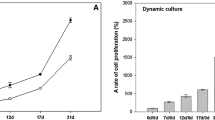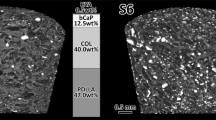Abstract
Many medical-related scientific discoveries arise from trial-error patterns where the processes involved must be refined and modified continuously before any product could be able to reach the final costumers. One of the elements affecting negatively these processes is the inaccuracy of two-dimension (2D) standard culture systems, carried over in plastic plates or similar, in replicating complex environments and patterns. Consequently, animal tests are required to validate every in vitro finding, at the expenses of more funds and ethical issues. A possible solution relies in the implementation of three-dimension (3D) culture systems as a fitting gear between the 2D tests and in vivo tests, aiming to reduce the negative in vivo outcomes. These 3D structures are depending from the comprehension of the extracellular matrix (ECM) and the ability to replicate it in vitro. In this article a comparison of efficacies between these two culture systems was taken as subject, human mesenchymal stem cells (hMSCs) was utilized and a hybrid scaffold made by a blend of chitosan, gelatin and biomineralized gelatin was used for the 3D culture system.










Similar content being viewed by others
References
Edmondson R, Broglie JJ, Adcock AF, Yang L. Three-dimensional cell culture systems and their applications in drug discovery and cell-based biosensors. Assay Drug Dev Technol. 2014;12:207–18. https://doi.org/10.1089/adt.2014.573.
Huh D, Hamilton GA, Ingber DE. From 3D cell culture to organs-on-chips. Trends Cell Biol. 2011;21:745–54. https://doi.org/10.1016/J.TCB.2011.09.005.
de la Puente P, Muz B, Gilson RC, Azab F, Luderer M, King J, et al. 3D tissue-engineered bone marrow as a novel model to study pathophysiology and drug resistance in multiple myeloma. Biomater. 2015;73:70–84. https://doi.org/10.1016/j.biomaterials.2015.09.017.
Baharvand H, Hashemi SM, Kazemi Ashtiani S, Farrokhi A. Differentiation of human embryonic stem cells into hepatocytes in 2D and 3D culture systems in vitro. Int J Dev Biol. 2006;50:645–52. https://doi.org/10.1387/ijdb.052072hb.
Imamura Y, Mukohara T, Shimono Y, Funakoshi Y, Chayahara N, Toyoda M, et al. Comparison of 2D- and 3D-culture models as drug-testing platforms in breast cancer. Oncol Rep. 2015;33:1837–43. https://doi.org/10.3892/or.2015.3767.
Cole MA, Quan T, Voorhees JJ, Fisher GJ. Extracellular matrix regulation of fibroblast function: redefining our perspective on skin aging. J Cell Commun Signal. 2018;12:35–43. https://doi.org/10.1007/s12079-018-0459-1.
Kim S-H, Turnbull J, Guimond S. Extracellular matrix and cell signalling: the dynamic cooperation of integrin, proteoglycan and growth factor receptor. J Endocrinol. 2011;209:139–51. https://doi.org/10.1530/JOE-10-0377.
Birgersdotter A, Sandberg R, Ernberg I. Gene expression perturbation in vitro-A growing case for three-dimensional (3D) culture systems. Semin Cancer Biol. 2005;15:405–12. https://doi.org/10.1016/j.semcancer.2005.06.009.
Byron A, Humphries JD, Humphries MJ. Defining the extracellular matrix using proteomics. Int J Exp Pathol. 2013;94:75–92. https://doi.org/10.1111/iep.12011.
Ravi M, Paramesh V, Kaviya SR, Anuradha E, Solomon FDP. 3D cell culture systems: Advantages and applications. J Cell Physiol. 2015;230:16–26. https://doi.org/10.1002/jcp.24683.
Lee J, Cuddihy MJ, Kotov NA. Three-dimensional cell culture matrices: state of the art. Tissue Eng B: Rev. 2008;14:61–86. https://doi.org/10.1089/teb.2007.0150.
Nyga A, Cheema U, Loizidou M. 3D tumour models: novel in vitro approaches to cancer studies. J Cell Commun Signal. 2011;5:239–48. https://doi.org/10.1007/s12079-011-0132-4.
Panseri S, Montesi M, Dozio SM, Savini E, Tampieri A, Sandri M. Biomimetic scaffold with aligned microporosity designed for dentin regeneration. Front Bioeng Biotechnol. 2016;4:48. https://doi.org/10.3389/fbioe.2016.00048.
Tampieri A, Celotti G, Landi E, Sandri M, Roveri N, Falini G. Biologically inspired synthesis of bone-like composite: self-assembled collagen fibers/hydroxyapatite nanocrystals. J Biomed Mater Res A. 2003;67:618–25. https://doi.org/10.1002/jbm.a.10039.
Magin CM, Alge DL, Anseth KS. Bio-inspired 3D microenvironments: a new dimension in tissue engineering. Biomed Mater. 2016;11:022001. https://doi.org/10.1088/1748-6041/11/2/022001.
Krishnakumar GS, Gostynska N, Dapporto M, Campodoni E, Montesi M, Panseri S, et al. Evaluation of different crosslinking agents on hybrid biomimetic collagen-hydroxyapatite composites for regenerative medicine. Int J Biol Macromol. 2018;106:739–48. https://doi.org/10.1016/j.ijbiomac.2017.08.076.
Landi E, Logroscino G, Proietti L, Tampieri A, Sandri M, Sprio S. Biomimetic Mg-substituted hydroxyapatite: from synthesis to in vivo behaviour. J Mater Sci Mater Med. 2008;19:239–47. https://doi.org/10.1007/s10856-006-0032-y.
Iafisco M, Ruffini A, Adamiano A, Sprio S, Tampieri A. Biomimetic magnesium-carbonate-apatite nanocrystals endowed with strontium ions as anti-osteoporotic trigger. Mater Sci Eng C Mater Biol Appl. 2014;35:212–9. https://doi.org/10.1016/j.msec.2013.11.009.
Tampieri A, Sprio S, Sandri M, Valentini FJTib. Mimicking natural bio-mineralization processes: a new tool for osteochondral scaffold development. Trends Biotechnol. 2011;29:526–35.
Minardi S, Corradetti B, Taraballi F, Sandri M, Van Eps J, Cabrera FJ, et al. Evaluation of the osteoinductive potential of a bio-inspired scaffold mimicking the osteogenic niche for bone augmentation. Biomater. 2015;62:128–37. https://doi.org/10.1016/j.biomaterials.2015.05.011.
Giorgi P, Capitani D, Sprio S, Sandri M, Tampieri A, Canella V, et al. A new bioinspired collagen-hydroxyapatite bone graft substitute in adult scoliosis surgery: Results at 3-year follow-up. J Appl Biomaterials & Functional Materials. 2017;15:262–70. https://doi.org/10.5301/jabfm.5000366.
Deans TL, Singh A, Gibson M, Elisseeff JH. Regulating synthetic gene networks in 3D materials. Proc Natl Acad Sci USA. 2012;109:15217–22. https://doi.org/10.1073/pnas.1204705109.
Sobacchi C, Erreni M, Strina D, Palagano E, Villa A, Menale C. 3D bone biomimetic scaffolds for basic and translational studies with mesenchymal stem cells. Int J Mol Sci. 2018;19:3150. https://doi.org/10.3390/ijms19103150.
Villa MM, Wang L, Huang J, Rowe DW, Wei M. Bone tissue engineering with a collagen-hydroxyapatite scaffold and culture expanded bone marrow stromal cells. J Biomed Mater Res B Appl Biomater. 2015;103:243–53. https://doi.org/10.1002/jbm.b.33225.
Clarke B. Normal bone anatomy and physiology. Clin J Am Soc Nephrol: CJASN. 2008;3(Suppl 3):S131–9. https://doi.org/10.2215/cjn.04151206.
Muzzarelli RAA, El Mehtedi M, Bottegoni C, Aquili A, Gigante A. Genipin-crosslinked chitosan gels and scaffolds for tissue engineering and regeneration of cartilage and bone. Mar Drugs. 2015;13:7314–38. https://doi.org/10.3390/md13127068.
Mao JS, Zhao LG, Yin YJ, Yao KD. Structure and properties of bilayer chitosan-gelatin scaffolds. Biomaterials. 2003;24:1067–74.
Mann S. Biomineralization: principles and concepts in bioinorganic materials chemistry. Bristol, UK: Oxford University Press on Demand; 2001.
Rodríguez GR, Patrício T, López JD. Natural polymers for bone repair. Bone Repair Biomaterials. Duxford, UK: Elsevier; 2019. p. 199–232.
Loh QL, Choong C. Three-dimensional scaffolds for tissue engineering applications: role of porosity and pore size. Tissue Eng B, Rev. 2013;19:485–502. https://doi.org/10.1089/ten.TEB.2012.0437.
Landi E, Tampieri A, Mattioli-Belmonte M, Celotti G, Sandri M, Gigante A, et al. Biomimetic Mg-and Mg, CO3-substituted hydroxyapatites: synthesis characterization and in vitro behaviour. J Eur Ceramic Soc. 2006;26:2593–601.
Rosso F, Giordano A, Barbarisi M, Barbarisi A. From Cell-ECM interactions to tissue engineering. J Cell Physiol. 2004;199:174–80. https://doi.org/10.1002/jcp.10471.
Preti L, Lambiase B, Campodoni E, Sandri M, Ruffini A, Pugno N et al. Nature-inspired processes and structures: new paradigms to develop highly bioactive devices for hard tissue regeneration. Bio-Inspired Technology. London, UK: IntechOpen; 2019.
Echave MC, Saenz del Burgo L, Pedraz JL, Orive G. Gelatin as biomaterial for tissue engineering. Curr Pharm Des. 2017;23:3567–84. https://doi.org/10.2174/0929867324666170511123101.
Bouchet BP, Akhmanova A. Microtubules in 3D cell motility. 2017;130:39–50. https://doi.org/10.1242/jcs.189431.
Valentijn AJ, Zouq N, Gilmore AP. Anoikis. Biochem Soc Trans. 2004;32:421–5. https://doi.org/10.1042/bst0320421.
Ranceschi RT, Ge C, Xiao G, Roca H, Jiang D. Transcriptional regulation of osteoblasts. Ann N Y Acad Sci. 2007;1116:196–207. https://doi.org/10.1196/annals.1402.081.
Orlando B, Giacomelli L, Ricci M, Barone A, Covani U. Leader genes in osteogenesis: a theoretical study. Arch Oral Biol. 2013;58:42–9. https://doi.org/10.1016/j.archoralbio.2012.07.010.
Chen D, Zhao M, Mundy GR. Bone morphogenetic proteins. Growth Factors. 2004;22:233–41. https://doi.org/10.1080/08977190412331279890.
Nakashima M, Reddi AH. The application of bone morphogenetic proteins to dental tissue engineering. Nat Biotechnol. 2003;21:1025–32. https://doi.org/10.1038/nbt864.
Zhang Y, Yang W, Devit A, van den Beucken JJJP. Efficiency of coculture with angiogenic cells or physiological BMP-2 administration on improving osteogenic differentiation and bone formation of MSCs. 2019;107:643–53. https://doi.org/10.1002/jbm.a.36581.
Sgambato A, Russo L, Montesi M, Panseri S, Marcacci M, Carava E, et al. Different sialoside epitopes on collagen film surfaces direct mesenchymal stem cell fate. ACS Appl Mater Interfaces. 2016;8:14952–7. https://doi.org/10.1021/acsami.5b08270.
Chen C, Wei X, Ling J, Xie N. Expression of matrilin-2 and -4 in human dental pulps during dentin-pulp complex wound healing. J Endod. 2011;37:642–9. https://doi.org/10.1016/j.joen.2011.02.018.
Paakkonen V, Vuoristo JT, Salo T, Tjaderhane L. Comparative gene expression profile analysis between native human odontoblasts and pulp tissue. Int Endod J. 2008;41:117–27. https://doi.org/10.1111/j.1365-2591.2007.01327.x.
Wagener R, Kobbe B, Paulsson M. Matrilin-4, a new member of the matrilin family of extracellular matrix proteins. FEBS Letters. 1998;436:123–7. https://doi.org/10.1016/S0014-5793(98)01111-9.
Krishnan V, Bryant HU, Macdougald OA. Regulation of bone mass by Wnt signaling. J Clin Invest. 2006;116:1202–9. https://doi.org/10.1172/JCI28551.
Han N, Zheng Y, Li R, Li X, Zhou M, Niu Y, et al. Beta-catenin enhances odontoblastic differentiation of dental pulp cells through activation of Runx2. PLoS ONE. 2014;9:e88890. https://doi.org/10.1371/journal.pone.0088890.
Grigoryan T, Wend P, Klaus A, Birchmeier W. Deciphering the function of canonical Wnt signals in development and disease: conditional loss- and gain-of-function mutations of beta-catenin in mice. Genes Dev. 2008;22:2308–41. https://doi.org/10.1101/gad.1686208.
Lim X, Nusse R. Wnt signaling in skin development, homeostasis, and disease. Cold Spring Harbor perspectives in biology. 2013;5. https://doi.org/10.1101/cshperspect.a008029.
Chen J, Lan Y, Baek JA, Gao Y, Jiang R. Wnt/beta-catenin signaling plays an essential role in activation of odontogenic mesenchyme during early tooth development. Dev Biol. 2009;334:174–85. https://doi.org/10.1016/j.ydbio.2009.07.015.
Jarvinen E, Salazar-Ciudad I, Birchmeier W, Taketo MM, Jernvall J, Thesleff I. Continuous tooth generation in mouse is induced by activated epithelial Wnt/beta-catenin signaling. Proc Natl Acad Sci USA. 2006;103:18627–32. https://doi.org/10.1073/pnas.0607289103.
Author information
Authors and Affiliations
Corresponding authors
Ethics declarations
Conflict of interest
The authors declare that the research was conducted in the absence of any commercial or financial relationships that could be construed as a potential conflict of interest.
Additional information
Publisher’s note Springer Nature remains neutral with regard to jurisdictional claims in published maps and institutional affiliations.
Rights and permissions
About this article
Cite this article
Dozio, S.M., Montesi, M., Campodoni, E. et al. Differences in osteogenic induction of human mesenchymal stem cells between a tailored 3D hybrid scaffold and a 2D standard culture. J Mater Sci: Mater Med 30, 136 (2019). https://doi.org/10.1007/s10856-019-6346-3
Received:
Accepted:
Published:
DOI: https://doi.org/10.1007/s10856-019-6346-3




